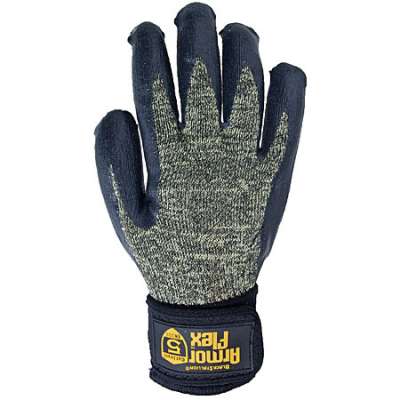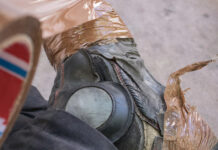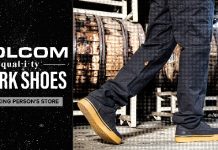Kevlar is a synthetic material known as a polymer. (Aren’t you glad you asked?) A Kevlar fiber is an array of molecules parallel to each other, like spaghetti in a package. These chains are held together by electrostatic forces between molecules known as hydrogen bonds. The fibers are drawn at a temperature of 750 degrees Fahrenheit. (For a mind-blowing fact, the actual chemical name of Kevlar is poly-para-phenylene terephthalamide!)
Simply put, it’s a super-strong plastic that’s continually rocking the industrial world.
A brilliant lady named Stephanie Louise Kwolek pioneered the research leading to the marketing of Kevlar by Dupont in the mid-1970s.
General features of Kevlar include:
- High Tensile Strength at Low Weight
- 8x Stronger Than Steel!
- Low Elongation to Break High Modulus (Structural Rigidity)
- Low Electrical Conductivity
- High Chemical Resistance
- Low Thermal Shrinkage
- High Toughness (Work-To-Break)
- Excellent Dimensional Stability
- High Cut Resistance
- Flame-Resistant, Self-Extinguishing
- Protection Against Thermal Hazards (up to 800 degrees Fahrenheit)
Importance of Kevlar
It’s used in bulletproof vests and body armor, so that should really emphasize its strength. Military personnel utilize gear made with Kevlar for a good reason: it protects.
It’s durable, fire-resistant, and abrasion-resistant, AND it’s a lightweight material that lets you stay on the move. Adding this technology that has incredible strength makes perfect sense when you want to add superior safety to your life. From footwear to workwear to accessories, Kevlar is here to stay.
Its ballistic resistance can withstand high-velocity impacts, and its cut-resistant qualities make it a must-have for job site safety. Metal shavings and sharp objects that can cause puncture wounds might be laying around the workplace when you least expect it, so having rugged equipment built with Kevlar is a wise choice.
Kevlar has been layered into bullet-resistant vests, but it’s also used in belts for radial tires, cables (used on the Mars Pathfinder), reinforced composites for aircraft panels and boat hulls, flame-resistant garments (especially in blends with Nomex), sports equipment such as golf club shafts and lightweight bicycles, as asbestos replacements in clutches and brakes, and in welding jackets, work gloves, and work boots.
Thank goodness for science.
The chemical structure of Kevlar might be difficult to comprehend, but we know it works. It’s proven itself time and time again, with rigorous testing and on-the-job effectiveness.
Somehow it defies what we think should happen – it’s insanely strong yet super lightweight. That’s what makes it so remarkable for workers worldwide.
Always double-check that the products you buy for the previous features and benefits are actually made with Kevlar. If you just assume they are, you may make a dangerous mistake by leaving yourself exposed to hazardous situations.




